Read Reviews
The Best 6-Burner Gas BBQs
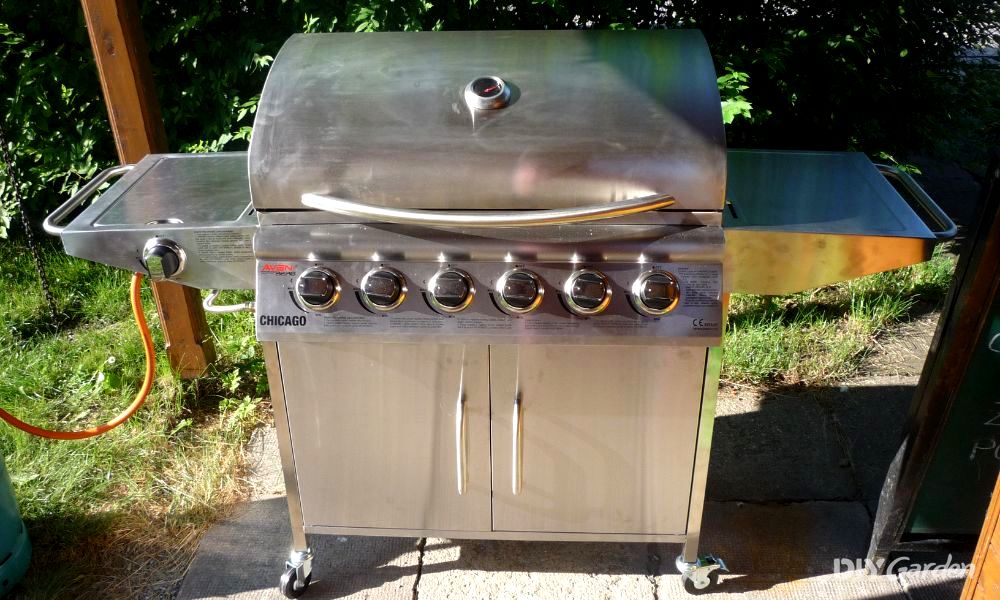
-
Best for entertaining - CosmoGrill Barbecue 6+1 Pro Gas Grill BBQ
-
Best for versatility - Fire Mountain Premier Plus 6 Burner Gas Barbecue
-
Best for features - Char-Broil Convective Series 640 B XL - 6 Burner Gas Barbecue
-
Best value for money - BillyOh Stainless Steel 6+1 Gas BBQ
6-Burner Gas BBQ Reviews
1. CosmoGrill Barbecue 6+1 Pro Gas Grill BBQ[ SAVE 25% ]
Best for entertaining
- Generous size cooking area can cook for up to 18 people at a time
- Total of seven burners can be lit individually according to what you’re cooking
- Additional side burner can be used to cook sauces and sides
- Integrated storage allows you to have everything you need to hand
- Easy to manoeuvre despite size - reasonably light and also has four wheels
- Assembly takes around two hours with an extra pair of hands
- Gas tube and regulator aren’t included so will need to be purchased separately
- Wheels are small so wheeling this BBQ across a lawn may be difficult
- Cooking Area
- 77x42cm
- Warming Rack?
- Yes
- Dimensions
- 149x55x110cm
- Weight
- 39kg
- Design
- 5
- Features
- 5
- Assembly Ease
- 4
- Value for Money
- 5
The CosmoGrill Barbecue 6+1 Pro Gas Grill BBQ is the best 6-burner gas BBQ for entertaining. It’s large, looks impressive, yet remains easy to control and use.
This barbecue has six main gas burners, plus an additional side burner for cooking things in a pan or frying pan. Each burner can be individually lit, so you don’t have to use them all if cooking for fewer people. This makes this BBQ just as suitable for a couple’s midweek dinner as it is for family gatherings.
This BBQ has a cooking area measuring 77 x 42 cm, which provides enough space to cook for up to 18 people at one time – one of the reasons it’s such a good choice for entertaining guests! The double walled hood helps to maintain the interior temperature, and there’s a thermometer at the top so you can easily monitor the temperature without opening the lid. Once cooked, food can be transferred to the large warming rack at the top of the burner.
Despite the large size, this BBQ is relatively easy to manoeuvre. It’s fitted with four castor wheels so it can be rolled across hard surfaces. Also, it’s surprisingly lightweight for such a large BBQ, weighing 39 kg (which is less than some 3-burner BBQs!). Therefore, although you’ll need two people, it’s not impossible to carry up and down steps in multi-level gardens.
The practical features don’t stop with its manoeuvrability; this BBQ also has integrated storage. The spacious bottom shelf has doors and will keep condiments, plates and accessories safely tucked away. There are also two side tables (one of which conceals the side burner) that can be used to store items, or for food preparation.
This BBQ arrives flat packed, which isn’t uncommon for gas BBQs. Assembly takes around two hours as long as the instructions are followed closely. They’re pretty clear and easy to understand, which can’t be said for all flatpack assembly manuals!
In terms of overall quality, this BBQ is pretty good. In some places, the metal may be a little thinner than you might expect, but this will be an aspect that helps keep the weight down. Therefore, it’s a reasonable compromise when you consider the fairly easy manoeuvrability of such a large BBQ.
Cleaning the BBQ after use is relatively simple, with relatively flat grills that don’t catch too much dirt and a drip tray that assists with removing the fat.
Overall, this is a very practical and functional choice. The lighter weight means you won’t shy away from getting this BBQ out of the shed when you want to, and it’s also an excellent choice for cooking food for a lot of people. It’s one of the best 6-burner gas BBQs overall, and a great option for entertaining guests.
Did you find this review helpful?
2. Fire Mountain Premier Plus 6 Burner Gas Barbecue
Best for versatility
- Motorised rotisserie included
- Space to cook for up to 20 people
- Build is good quality and robust
- A grill and griddle surface for cooking a variety of different food
- Comes with a protective cover included
- Reasonably heavy so will be difficult to lift up and down steps
- Cooking Area
- 92.5x41.5cm
- Warming Rack?
- Yes
- Dimensions
- 157x53x114.5cm
- Weight
- 55kg
- Design
- 5
- Features
- 5
- Assembly Ease
- 5
- Value for Money
- 4
This Fire Mountain 6-Burner Gas BBQ is a good choice for those after a versatile and practical BBQ. It’s fitted with a combination grill and griddle cooking surface as well as a rotisserie. This makes it the best 6-burner gas BBQ for versatile cooking – you can cook a variety of different foods at once.
The grill side can be used for sausages and steaks, whilst the griddle area can be used to grill bacon or even make pancakes. On top of this, the detachable rotisserie (which is rare to find included with a BBQ) can cook whole poultry birds. The rotisserie turns on a motor so you don’t even need to worry about evenly cooking it yourself.
With a cooking area measuring 92.5 x 41.5 cm, this BBQ can easily cook for up to 20 people at once. The area is powered by six stainless steel burners, each controlled individually with piezo ignition, and they’re easy to light every time. There is also an additional side burner (just adding to this BBQs versatility!) that can be used to cook sauces and sides.
There is blue LED lighting surrounding the control dials, making it possible to see which are on, and to what level, from a distance – even at dusk. Additionally, the thermometer on the hood allows you to monitor the interior temperature without opening the lid.
Underneath the cooking area, there’s a large drip tray that catches any grease or fallen bits of food. The tray funnels the fat down into the centre, making it easier to clean after cooking.
Another benefit of this BBQ is that it’s very good quality. It’s made from stainless steel, enamel and cast iron. It’s sturdy and even looks like a premium model thanks to its sleek appearance and the blue LEDs. It comes with a protective cover included, which fits well, adding to the overall quality.
Although this BBQ is heavy, at 55 kg, it’s fitted with four castor wheels that make it easier to move across hard ground. Assembly is reasonably straightforward – the BBQ can be put together in around an hour depending on your familiarity with DIY.
To summarise, this BBQ is one of the best for versatility. It’s a premium model, so you do pay a little more for it, but the features and cooking options that you get in return are well worth the price – particularly if you’re passionate about cooking outdoors.
Did you find this review helpful?
3. Char-Broil Convective Series 640 B XL - 6 Burner Gas Barbecue
Best for features
- Sear station can sear meat without causing it to burn or dry out
- Large capacity can cater for big groups of people - great for entertaining
- Side burner for sauces and sides
- Cast iron grates produce perfect sear marks
- Cooks very evenly
- Heaviest BBQ at 63 kg
- An AA battery is required for the electronic ignition
- Longest assembly time - can take up to four hours
- Cooking Area
- 89x47cm
- Warming Rack?
- Yes
- Dimensions
- 62.4x24.53x45cm
- Weight
- 63kg
- Design
- 5
- Features
- 4.5
- Assembly Ease
- 3.5
- Value for Money
- 4.5
If you know the importance of a perfectly seared cut of meat, the Char-Broil Convective Series 640 B XL – 6 Burner Gas Barbecue will be the ideal BBQing companion. On top of this BBQs five main burners and one side burner, there’s an additional ‘sear zone’ burner.
The sear zone is powered using a 4.68 kW burner that reaches high temperatures even quicker. This means you can quickly cook meat on this part of the grill, sealing it without causing it to dry out or burn. It’s therefore one of the best 6-burner gas BBQs for anyone who likes to sear beef, poultry, pork or seafood.
The remaining burners can also be individually controlled, and each one has electronic ignition allowing you to light the burner at the push of a button. The temperature gauge on the hood means you’ll be able to monitor the interior temperature without opening the lid of the BBQ.
The additional side burner can be used for sauces and sides. This burner area has a lid so it can be covered when not in use. When it’s concealed, it can just be used as a regular side table. There are two side tables on this BBQ altogether.
With cast iron grill grates, this BBQ produces visible sear marks on food. Just be aware that these grills cannot be cleaned in the dishwasher as the coating may get damaged. Therefore, all of the parts of this BBQ have to be cleaned by hand.
In total, the cooking area measures 89 x 47 cm. The manufacturer states that this can cook for over 8 people, and I estimate it would be suitable for cooking for up to 20. The removable shelf above the cooking area can be used to keep food warm when it’s ready and it can also be used to toast rolls and buns if needed.
Weighing 63 kg, this BBQ is the heaviest option featured here. It’s fitted with four castor wheels, so it can easily be wheeled across hard surfaces, but it might be a bit of an ordeal to move across multi-level gardens. Two of the castor wheels lock, stopping the BBQ from rolling once it’s in position.
Assembly is the longest of any BBQ on this page. It takes between 2 – 4 hours, depending on your DIY experience. However, the end result is well worth this time investment – just don’t try to assemble it when you’re hosting a BBQ on the same day! There’s a hose and patio gas regulator included, so once the BBQ is up and running, you will at least be ready to go.
Not only is this one of the best 6-burner gas BBQs if you want to sear different meat, it’s also got a lot of other factors going for it. It can cater for a lot of people, it’s very powerful and it cooks food uniformly. You certainly get bang for your buck with this one.
Did you find this review helpful?
4. BillyOh Stainless Steel 6+1 Gas BBQ
Best value for money
- Option to use either the grill or searing plate depending on what you’re cooking
- Comes with a cover, gas hose and regulator included
- All four castor wheels lock to secure the BBQ in place
- Reasonably lightweight at 40 kg
- Designed and built locally in Nottinghamshire
- Takes two to three hours to build
- Cooking Area
- 76x40cm
- Warming Rack?
- Yes
- Dimensions
- 146x53x106cm
- Weight
- 40kg
- Design
- 4.5
- Features
- 4.5
- Assembly Ease
- 3.5
- Value for Money
- 5
Coming with a lot of useful, additional elements, this BillyOh Stainless Steel 6+1 Gas BBQ is the best 6-burner gas BBQ if you’re after value for money. Not only this, but it’s been designed and made by BillyOh in Nottinghamshire, by people who certainly know about the nuances of BBQing in the UK!
Before we get into the main specifications, I want to mention a few things that sets it apart from many other BBQs. It comes with a hose and gas regulator included, and is suitable for use with both butane and propane gas. There’s also a waterproof PVC cover included, to offer protection from the elements. All this, and yet it’s still cheaper than several BBQs featured here.
This BBQ has a split grill that makes cooking different food as easy as possible. One side is a cast iron searing plate, while the other is a porcelain cooking grid. The warming rack at the top can be used to keep cooked food warm. Additionally, there’s a side burner which provides an extra cooking space for side dishes or preparing sauces. The total cooking area measures 76 x 40 cm.
Like other BBQs on this page, this BillyOh BBQ has burners which can be individually controlled. Whether you’re cooking for just a couple of people or hosting a summer party, you’ll have full control over the cooking area, allowing you to cook different foods at the same time.
Other helpful features include a built-in thermometer that allows you to safely and accurately monitor the cooking temperature, a side table shelf and a storage cabinet underneath.
Weighing 40 kg, this BBQ is lighter than the majority of 6-burner gas BBQs on this page. It has four castor wheels, all of which are able to be locked in position to stop the BBQ from moving around.
In terms of assembly, you’re looking at around two to three hours with this model. It’s relatively straightforward, just slightly time consuming.
Overall, this is one of the best gas BBQs if you’re after value for money. It offers a lot of great features, including a grill/griddle cooking area and a side burner, plus it’s large enough to cater to a lot of people. The included cover, hose and regulator makes it better value than others on the market.
Did you find this review helpful?
Compare Product Features
Use the dropdown to sort the table by the feature you want to see.
CosmoGrill Barbecue 6+1 Pro Gas Grill BBQ
- 4.8
- 77x42cm
- Yes
- 149x55x110cm
- 39kg
Fire Mountain Premier Plus 6 Burner Gas Barbecue
- 4.8
- 92.5x41.5cm
- Yes
- 157x53x114.5cm
- 55kg
Char-Broil Convective Series 640 B XL - 6 Burner Gas Barbecue
- 4.4
- 89x47cm
- Yes
- 62.4x24.53x45cm
- 63kg
BillyOh Stainless Steel 6+1 Gas BBQ
- 4.4
- 76x40cm
- Yes
- 146x53x106cm
- 40kg
How to Choose The Best 6-Burner Gas BBQ
There’s not much better than stepping outside to the delicious smoky aroma of food grilling on the BBQ, but traditional charcoal BBQs require a lot of preparation when it comes to loading the coals and waiting for them to heat.
If you love hosting, but you also value efficiency, you’re probably considering a gas BBQ. These are perfect for spontaneous get togethers given that gas BBQs heat up in just 5 – 10 minutes. You’ll be ready to go just seconds after the sun comes out!
Perfect for large households and parties, 6-burner gas BBQs have ample cooking space. Each burner can usually be controlled individually, so you can sear steak at a high temperature while simultaneously cooking vegetables, sausages or chicken at a lower heat.
If you’re considering purchasing a 6-burner gas BBQ but you’re not sure what to look out for, the following tips should help to inform your decision.
Benefits of a Gas BBQ Over Charcoal
The topic of whether to go for a gas or charcoal BBQ can be quite divisive, but there are advantages and disadvantages to both.
Gas BBQs
Advantages:
- Heat up in around 5 – 10 minutes
- Temperature can be precisely set on each individual burner
- Provide a direct and constant heat
- BBQs often come with side burners that allow you to cook sauces or sides
- Relatively easy to clean as there’s no messy charcoal to deal with
- Cool down faster than charcoal BBQs
Disadvantages
- Gas canisters will need to be purchase, stored and disposed of when empty
- Won’t provide the same smoky taste as charcoal BBQs
Charcoal BBQs
Advantages:
- Usually cheaper to purchase than gas BBQs
- Suitable for indirect grilling
- Food takes on a delicious smoky flavour
- Can be easier to buy and store charcoal than gas canisters
Disadvantages
- Temperature regulation is harder than with gas
- Take longer to heat up – usually around 40 minutes
Advantages of a 6-Burner Gas Grill
Gas BBQs are available in a range of sizes, with the number of burners ranging anywhere from two burners all the way to ten!
6-burner gas BBQs are a popular option for those who want a large cooking area but don’t want an outrageously enormous BBQ to deal with. For most parties and family gatherings, a 6-burner gas BBQ will be all you need – they can generally cater for over 15 people at a time.
With 6-burner BBQs, each burner will be able to be set to a different temperature. This is one of the benefits of a 6-burner BBQ, as you’ll be able to cook lots of different foods at once, even if they have different temperature requirements. Steaks can be seared at a high heat, while sausages can be cooked through at a lower temperature. 6-burner grills give you ample flexibility when it comes to the temperature.
Selecting the Right Size BBQ
The 6-burner BBQs that I’ve recommended on this page have cooking areas measuring in the region of 80 x 45 cm. This should be able to accommodate around 15 people (or even more). BBQs with a warming rack are better suited to catering for more people, as cooked food can be kept warm whilst additional items are still being cooked.
6-burner BBQs are around 150 cm long. They’re not enormous but you’ll still need a fair amount of space to store them. Most have side tables for storage which will add considerably to the width. In some cases, you may be able to remove these side tables (if they’re not fitted with a side burner) which will help with storage in a smaller area over winter.
Weight is a priority to consider – particularly if you have steps or uneven surfaces in your garden. Some gas BBQs can weigh over 60 kg, making them relatively difficult to manoeuvre unless your garden is flat. Depending on the terrain in your garden, you may need to look for a lighter 6-burner BBQ; some of them weigh closer to 40 kg.
Due to their size, most 6-burner BBQs are fitted with four wheels instead of just two. These are often small castor wheels. Generally speaking, these move well across hard surfaces (like patios) but may struggle over soft grass.
Extra Features
These are worthwhile features to look out for on a new 6-burner gas BBQ:
Side shelves: These are a common extra feature. These can be used to store bread rolls, condiments, plates and cutlery. They could also be used as an additional food prep area.
Underneath storage: This can be used to store your gas canister when not in use, or it’s a great place for plates and crockery. Those with a cabinet are safer than open storage areas, especially if you’ve got kids or pets running around!
Side burner: Most 6-burner BBQs come with an additional side burner (most of which can be covered up while not in use and used as a side table). Side burners can be used to heat sauces or make sides such as beans or onions. This means that all the cooking can be done at the BBQ, instead of requiring you to split your time between the kitchen and the outdoor grill.
Temperature gauge: If you’ve got a temperature gauge on the lid you’ll be able to see when the BBQ is adequately pre-heated without lifting the lid and losing heat. Most 6-burner BBQs should come with this feature.
Warming rack: These are another handy feature, keeping food warm while other items are cooking. Some warming racks can be used for roasting and baking.
Cover: I recommend storing your BBQ under a cover even if it’s inside, purely to protect it from dust and debris. Some BBQs come with a waterproof cover included, which allows your BBQ to be stored outside. If you’re planning on leaving your BBQ outside in bad weather, a good quality and fully waterproof cover is essential.
READ NEXT: The Best Outdoor Pizza Ovens
Working Out What Type of Gas to Use
When it comes to gas BBQs, you’ve got two main choices – butane and propane.
These are the most common gases used for home BBQing. Butane comes in blue cylinders, and propane comes in red.
Propane will burn in temperatures as low as -42°C. Therefore, it’s a good choice for winter BBQing! Whilst not the most popular time to have a BBQ, if you do fancy some grilled sausages in 0°C weather, it’s nice to know you’ve got the gas for the job!
Butane is a great choice for year-round BBQing, it just doesn’t burn well in temperatures below -2°C. For most typical UK BBQs, this won’t be problematic. Butane flows very well in warm temperatures, so it’s a great choice for summer BBQing.
Butane fuel is also slightly cheaper than propane, and it doesn’t burn as fast. This can make it a good choice economically as you may end up buying less butane than you would propane.
What about a Regulator?
A regulator is needed to connect the gas to the BBQ. This will control the amount of gas flowing into the BBQ, stopping too much from being used at once.
While some gas BBQs come with a regulator included, others do not. If your BBQ comes with a regulator, it would be compatible with either butane or propane gas. You’ll therefore need to buy gas based on the type of regulator included (unless you fancy purchasing a separate regulator).
If your BBQ doesn’t come with a hose and regulator included, then these will need to be purchased separately.
Regulators are either clip on or screw on, so this is another thing to check when buying gas. Make sure the gas canister is compatible with the regulators connecting style.
READ NEXT: The Best 3 Burner Gas BBQs
6-Burner Gas BBQ FAQs
You should clean the grill plates after every use. These can usually be lifted off the BBQ and either cleaned in the dishwasher or by hand. Check with the manufacturer first to see if they are dishwasher compatible – using a dishwasher can damage some grills.
The exterior should be wiped clean once a month, and the interior cleaned fully every 3 months.
Before cleaning, disconnect the gas tank. Use a grate cleaner and grill brushes to clean the grills and interior.
This will depend on a few factors. Firstly, the gas BBQ will need to be compatible with butane gas. Some gas BBQs are only compatible with either propane or butane. Secondly, you’ll need to have a regulator that is suitable for use with butane gas. If your gas BBQ came with a regulator, the regulator will either be a butane regulator or a propane regulator. You may have to buy a new regulator so that it is compatible with butane.
This depends on what you are cooking.
Grilling with the lid open is good for searing food, but it won’t provide the surrounding heat required to cook some foods properly through the middle. Grilling with the lid open will mean you need to turn food frequently to prevent the bottom from burning.
With a gas grill, keeping the lid shut will build the temperature very quickly. This will allow you to cook large cuts of meat such as chicken or pork, as the heat surrounding them will help them to cook all the way through.
Gas BBQs generally heat very quickly – usually in around 5 – 15 minutes. For steaks and burgers, I recommend searing the meat on a high heat for a minute or so, then reduce the heat and cook to taste.
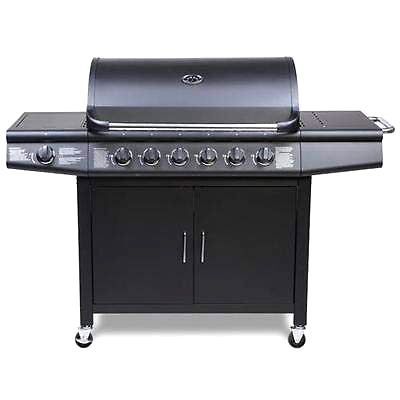
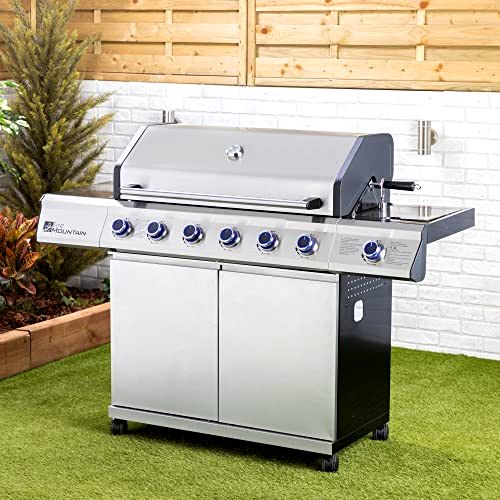
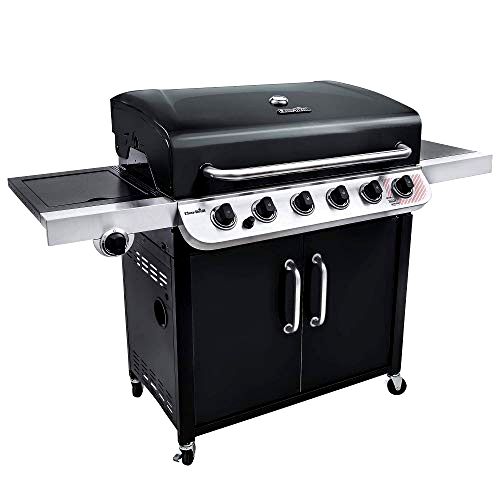
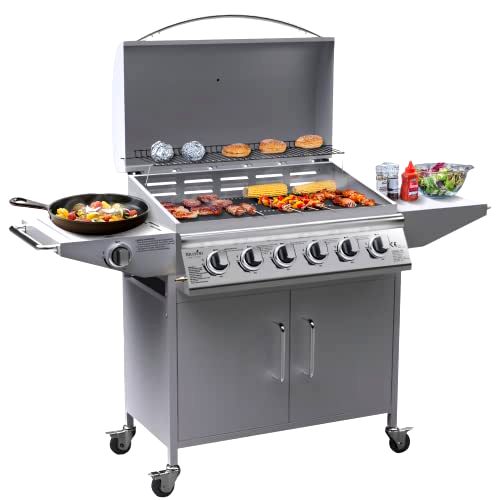

Share